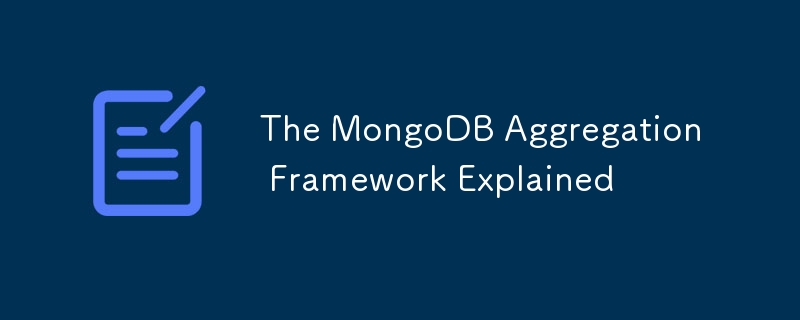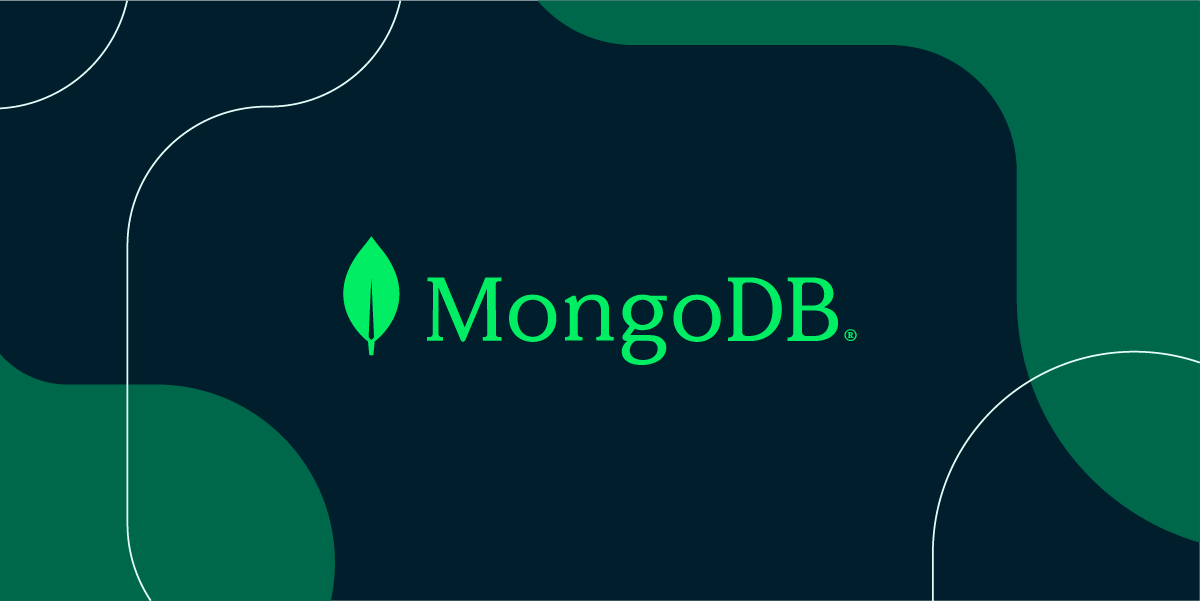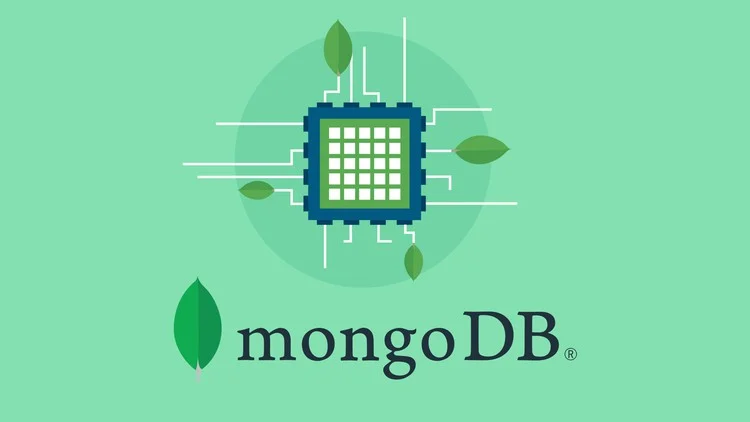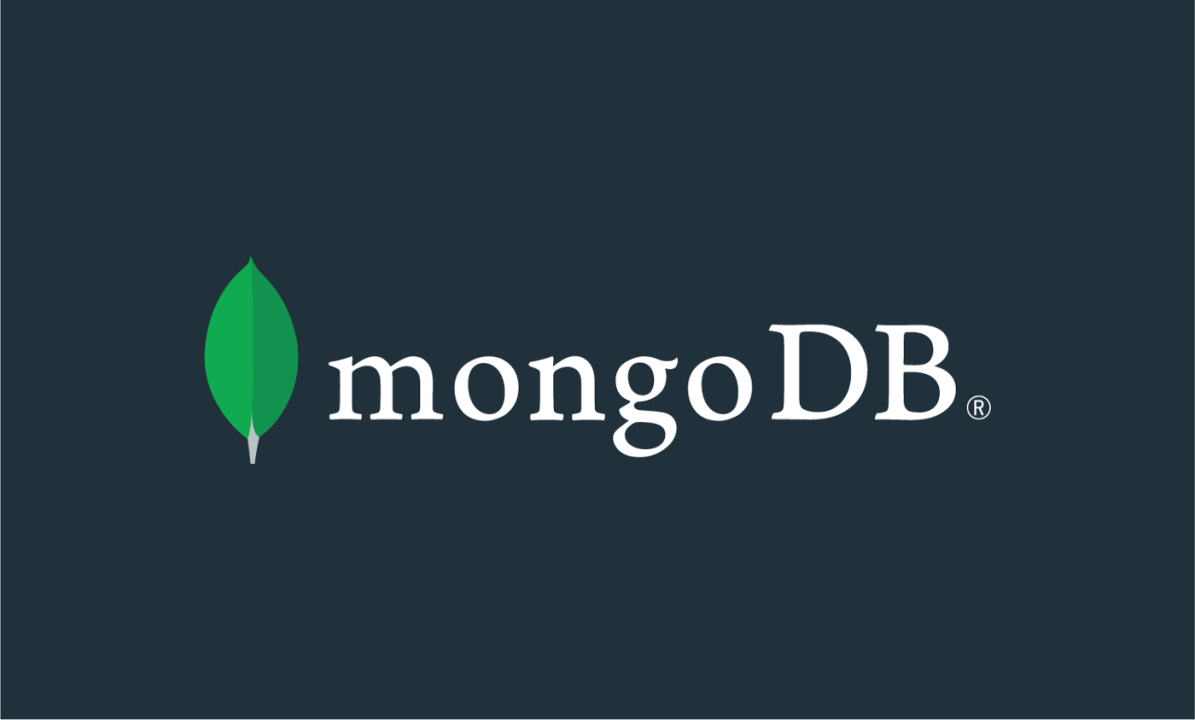MongoDB聚合框架解释了
MongoDB的聚合框架是处理大规模数据集并进行汇总、过滤和重塑的首选工具,答案是使用聚合管道来实现复杂的数据分析。1. 聚合管道由多个阶段组成,每个阶段依次处理文档并传递结果;2. 常用阶段包括 $match 过滤文档、$group 分组聚合、$sort 排序、$project 重塑字段、$lookup 实现集合关联、$unwind 拆解数组;3. 例如统计各品类销售总额需先筛选完成订单,再按品类分组求和,最后降序排列;4. $project 可计算新字段如合并姓名,适用于API数据格式化;5. $lookup 支持跨集合连接,突破传统NoSQL限制;6. $unwind 可将数组展开以便后续处理,结合 $replaceRoot 提升嵌套对象层级;7. $cond 和 $switch 支持条件判断,实现类似表格逻辑;8. 性能优化建议包括尽早使用 $match 减少数据流、为匹配和排序字段创建索引、避免冗余字段操作、在排序后及时使用 $limit 限制结果数量;9. 相较于简单查询应使用 find(),复杂分析场景推荐聚合框架,而 map-reduce 已基本被取代;10. 聚合适用于求区域平均订单金额、识别长期未下单用户、按月统计销量等问题,具备高性能与易用性,适合从数据分析到实时仪表盘的广泛应用场景。

MongoDB’s Aggregation Framework is a powerful tool for analyzing and transforming data stored in collections. If you’re working with large datasets and need to summarize, filter, or reshape data, the aggregation framework is likely your go-to solution—much more flexible than simple queries or map-reduce operations.

At its core, the aggregation framework processes data records and returns computed results. It works by building pipelines—a series of stages where each stage transforms the data before passing it to the next. Think of it like an assembly line: documents enter, get modified or filtered at each step, and eventually come out in a useful format.
How the Aggregation Pipeline Works
The pipeline is made up of stages, and each stage performs a specific operation. Documents flow through the stages sequentially. Common stages include:

-
$match– Filters documents (likeWHEREin SQL) -
$group– Groups documents and performs aggregations (likeGROUP BY) -
$sort– Sorts the documents -
$project– Reshapes the document (include, exclude, or rename fields) -
$lookup– Performs a join with another collection -
$unwind– Deconstructs arrays into individual documents
Each stage takes a set of documents as input and outputs another set—possibly modified, filtered, or restructured.
For example, if you want to find total sales per product category:

db.orders.aggregate([
{ $match: { status: "completed" } },
{ $group: { _id: "$category", totalSales: { $sum: "$amount" } } },
{ $sort: { totalSales: -1 } }
])This pipeline:
- Filters completed orders
- Groups them by category and sums the amounts
- Sorts results by total sales in descending order
Key Features and Use Cases
1. Data Transformation with $project
You can reshape documents to include computed fields or clean up output. For example, combining first and last names:
{ $project: {
fullName: { $concat: ["$firstName", " ", "$lastName"] },
email: 1
} }This is great for API responses where you want only specific or reformatted fields.
2. Joins Across Collections Using $lookup
Unlike traditional NoSQL limitations, MongoDB allows joining data. Say you want to attach customer info to each order:
{ $lookup: {
from: "customers",
localField: "customerId",
foreignField: "_id",
as: "customer"
} }Now each order includes an array with the matching customer data.
3. Unwinding and Rebuilding Arrays
When you use $lookup, you often get arrays—even if there’s just one match. Use $unwind to flatten them:
{ $unwind: "$customer" }Then you can access customer.name, customer.email, etc., directly.
After unwinding, you might use $replaceRoot to promote the customer to the root level if needed.
4. Conditional Logic with $cond and $switch
You can add logic inside expressions. For example, categorizing order sizes:
{ $project: {
orderSize: {
$cond: { if: { $gt: ["$amount", 1000] }, then: "Large", else: "Small" }
}
} }This brings spreadsheet-like logic into your database layer.
Performance Tips
Aggregation is powerful, but misused, it can be slow. Here are a few best practices:
- Use
$matchearly – Filter as early as possible to reduce the number of documents moving through the pipeline. - Index your match and sort fields – Just like regular queries, indexes speed things up.
- Avoid unnecessary
$projector$addFields– Only include what you need. - Limit results when possible – Use
$limitafter$sortto avoid processing more data than needed.
For example, this is more efficient:
[ { $match: { createdAt: { $gte: "2023-01-01" } } },
{ $sort: { amount: -1 } },
{ $limit: 10 } ]Than sorting all documents first.
When to Use Aggregation vs. Other Methods
- Use aggregation when you need complex data processing, grouping, joins, or transformations.
-
Use simple
find()for basic reads and filtering. - Avoid map-reduce unless absolutely necessary—aggregation is faster and easier to write.
MongoDB’s aggregation framework has largely replaced map-reduce for most use cases due to better performance and cleaner syntax.
Basically, if you need to answer questions like:
- What’s the average order value per region?
- Which users haven’t placed an order in 6 months?
- How many products were sold per month?
…then the aggregation framework is your best friend. It’s expressive, efficient, and built right into MongoDB.
With a bit of practice, you’ll find yourself using it for everything from analytics to real-time dashboards.
以上是MongoDB聚合框架解释了的详细内容。更多信息请关注PHP中文网其他相关文章!

热AI工具

Undress AI Tool
免费脱衣服图片

Undresser.AI Undress
人工智能驱动的应用程序,用于创建逼真的裸体照片

AI Clothes Remover
用于从照片中去除衣服的在线人工智能工具。

Clothoff.io
AI脱衣机

Video Face Swap
使用我们完全免费的人工智能换脸工具轻松在任何视频中换脸!

热门文章

热工具

记事本++7.3.1
好用且免费的代码编辑器

SublimeText3汉化版
中文版,非常好用

禅工作室 13.0.1
功能强大的PHP集成开发环境

Dreamweaver CS6
视觉化网页开发工具

SublimeText3 Mac版
神级代码编辑软件(SublimeText3)
 MongoDB的免费层产品(例如在Atlas上)有什么局限性?
Jul 21, 2025 am 01:20 AM
MongoDB的免费层产品(例如在Atlas上)有什么局限性?
Jul 21, 2025 am 01:20 AM
MongoDBAtlas的免费层级存在性能、可用性、使用限制及存储等多方面局限,不适合生产环境。首先,其提供的M0集群共享CPU资源,仅512MB内存和最高2GB存储,难以支撑实时性能或数据增长;其次,缺乏高可用架构如多节点副本集和自动故障转移,维护或故障期间可能导致服务中断;再者,每小时读写操作受限,连接数和带宽也受限制,轻度流量即可触发限流;最后,备份功能受限,存储上限易因索引或文件存储迅速耗尽,因此仅适用于演示或小型个人项目。
 updateOne(),updatemany()和repentOne()方法有什么区别?
Jul 15, 2025 am 12:04 AM
updateOne(),updatemany()和repentOne()方法有什么区别?
Jul 15, 2025 am 12:04 AM
MongoDB中updateOne()、updateMany()和replaceOne()的主要区别在于更新范围和方式。①updateOne()仅更新首个匹配文档的部分字段,适用于确保只修改一条记录的场景;②updateMany()更新所有匹配文档的部分字段,适用于批量更新多条记录的场景;③replaceOne()则完全替换首个匹配文档,适用于需要整体覆盖文档内容而不保留原结构的场景。三者分别适用于不同数据操作需求,根据更新范围和操作粒度进行选择。
 您能解释TTL(寿命)索引的目的和用例吗?
Jul 12, 2025 am 01:25 AM
您能解释TTL(寿命)索引的目的和用例吗?
Jul 12, 2025 am 01:25 AM
ttlindexesautomationaldeletedeletdateDateDataFterAsettime.theyworkondatefields,usefabackgroundProcessToreMoveExpiredDocuments.
 数据迁移从关系数据库到MongoDB的考虑因素是什么?
Jul 12, 2025 am 12:45 AM
数据迁移从关系数据库到MongoDB的考虑因素是什么?
Jul 12, 2025 am 12:45 AM
迁移关系型数据库到MongoDB需重点考虑数据模型设计、一致性控制及性能优化。首先,根据查询模式将表结构转换为嵌套或引用的文档结构,优先使用嵌套减少关联操作;其次,适当冗余数据以提升查询效率,并依据业务需求判断是否使用事务或应用层补偿机制;最后,合理创建索引、规划分片策略,并选择合适工具分阶段迁移以确保数据一致性和系统稳定性。
 MongoDB基于角色的访问控制(RBAC)系统中的角色和特权是什么?
Jul 13, 2025 am 12:01 AM
MongoDB基于角色的访问控制(RBAC)系统中的角色和特权是什么?
Jul 13, 2025 am 12:01 AM
MongoDB的RBAC通过角色分配权限来管理数据库访问。其核心机制是将预定义权限集合的角色赋予用户,从而决定其可执行的操作及范围。角色如同职位,如“只读”或“管理员”,内置角色满足常见需求,也可创建自定义角色。权限由操作(如insert、find)和资源(如集合、数据库)组成,例如允许在特定集合上执行查询。常用内置角色包括read、readWrite、dbAdmin、userAdmin和clusterAdmin等。创建用户时需指定角色及其作用范围,如Jane可在sales库有读写权,在inve
 什么是读取偏好,它们如何控制复制品集中的查询路由?
Jul 13, 2025 am 12:26 AM
什么是读取偏好,它们如何控制复制品集中的查询路由?
Jul 13, 2025 am 12:26 AM
MongoDB的读取偏好决定了如何将应用程序的读取操作路由到副本集成员,默认所有读取操作发送到主节点,但可根据需求配置不同的读取偏好以优化性能和数据一致性。主要模式包括primary(仅主节点读取,确保最新数据)、primaryPreferred(优先主节点,不可用时使用次级节点)、secondary(仅次级节点,适用于卸载主节点负载)、secondaryPreferred(优先次级节点,无次级时使用主节点)、nearest(选择网络延迟最低的节点,不论主次)。这些模式影响查询路由方式,由驱动程
 Mongodb Atlas vs.自托管MongoDB:哪个适合您?
Jul 30, 2025 am 12:50 AM
Mongodb Atlas vs.自托管MongoDB:哪个适合您?
Jul 30, 2025 am 12:50 AM
MongoDBAtlas更适合小团队或缺乏DBA资源的组织,因它提供全自动管理、快速部署和内置安全;2.成本上Atlas初期透明易预算,但用量大后可能高于自托管,后者虽基础设施费低却需计入人力与风险成本;3.安全合规方面Atlas默认企业级配置并自动更新,自托管需手动实现且易出错;4.所需控制力强、有定制需求或数据主权限制时选自托管,否则多数团队应首选Atlas以聚焦产品开发而非运维,此选择最省时可靠并支持未来灵活调整。
 MongoDB的交易是什么,它们如何为多文档操作提供酸性?
Jul 31, 2025 am 06:25 AM
MongoDB的交易是什么,它们如何为多文档操作提供酸性?
Jul 31, 2025 am 06:25 AM
MongoDBintroducedmulti-documenttransactionsinversion4.0,enablingatomicoperationsacrosscollectionsforstrongconsistency.Transactionsallowmultipleread/writeoperationstobegroupedasasingleunit,eitherallsucceedingorfailingtogether.Theyaresupportedinreplica







